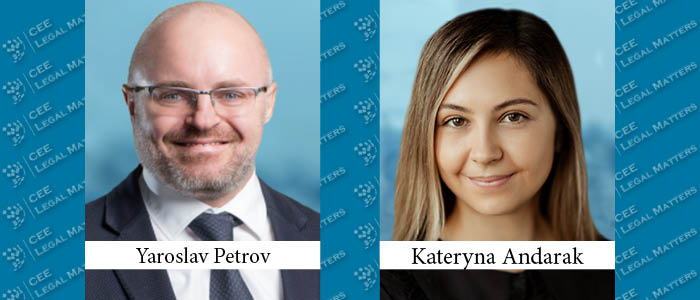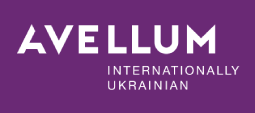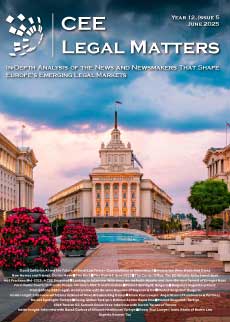Digest of recent legislative developments in the fields of energy and natural resources.
Electricity
1. Amendments to the Transmission System Code | On 6 May 2025, the NEURC approved amendments to the Transmission System Code implementing the provisions of EU Regulations 2017/1485 and 2017/2196 on the operation of electricity systems and actions in the event of emergencies.
Key changes:
- For the first time, a clear criteria procedure for declaring an emergency in the United Energy System of Ukraine (the "UES") have been established at the regulatory level.
- The main technical indicators of an emergency include violations of operational safety limits and of transmission system stability (such as overloading, frequency or voltage deviations, power shortages, etc.), as well as events related to cross-border power flows, shortages or total or partial blackouts in Ukraine's energy system.
- The transmission system operator (the "TSO") shall carry out an operational assessment of the scale and impact of the situation, notify the relevant state authorities and, if other measures are insufficient, may restrict cross-border electricity trade.
- Within one hour of the incident, the TSO must publish an official message on its website, indicating the cause, time, location, scale of the emergency and the measures taken.
Expected impact:
The adopted changes mean updating the regulatory framework for crisis management of the energy system, increasing transparency and harmonizing procedures with European standards. For energy companies and large consumers, this means greater predictability of actions in crisis situations.
2. Updates to pricing rules on the balancing market | On 20 May 2025 the NEURC approved amendments to the Market Rules concerning the procedure for calculating prices for balancing electricity and imbalances.
Key changes:
- The amendments establish how marginal prices for electricity loading and unloading are calculated for each hour of the settlement period in each trading zone.
- If there is a deficit in the zone, the loading price is taken as the highest of the activated bids.
- If there is a shortage, but no bids are activated (or only systemically restrictive ones were), price is calculated based on average historical values.
- For balanced zones, the DAM price or its average value over the last 30 days is used.
- A similar approach applies to surplus areas — the marginal price for unloading is calculated as the lowest of the activated prices or, if there are no activations, as the average historical value. If the area is balanced, reference values from the DAM are used.
The changes also clarify the calculation of imbalance prices when no balancing electricity volumes are activated within the settlement period. In such cases, the price for settling the imbalance is equal to the maximum or minimum of the marginal prices during that period, respectively.
Expected impact:
The new approach to pricing will enable market participants to better understand the pricing logic and expect fairer results when balancing.
3. Updates to the procedures for setting tariffs for transmission and dispatching | On 13 May 2025, the NEURC adopted two resolutions amending the Procedure for setting tariffs for electricity transmission services and the Procedure for dispatching (operational and technological) management. The changes are intended to bring the procedures into line with new legislative provisions, in particular Law No. 4213-IX, which specifies the functioning of the energy sector under martial law.
Key changes:
- An exception to the rule prohibiting cross-subsidization was provided for. From now on, when calculating tariffs for transmission and dispatching, it will be possible to repay the debts of the TSO to the guaranteed buyer for services to increase the share of electricity from renewable sources, as well as for operations on the balancing market.
Expected impact:
The changes expand the financial maneuvering opportunities for TSOs to cover critical costs arising from obligations to RES producers and in the balancing market. For market participants, this means a potential increase in tariff burdens due to such compensation.
4. The NEURC adopted a Resolution on maximum prices for the DAM, IDM, and balancing market | On 27 May 2025 the NEURC set maximum prices for DAM, the IDM, and the balancing market as part of its regular monitoring, leaving them at the same level as six months ago.
In particular:
On the DAM and IDM:
- from 12:00 a.m. to 07:00 a.m. and from 11:00 a.m. to 17:00 p.m. — 5,600 UAH/MWh (119 EUR)
- from 7:00 a.m. to 11:00 a.m. and from 11:00 p.m. to 12:00 a.m. — 6,900 UAH/MWh (146 EUR)
- from 5:00 p.m. to 11:00 p.m. — 9,000 UAH/MWh (191 EUR)
- minimum price limit — 10 UAH/MWh (0,2 EUR)
On the balancing market:
- from 12:00 a.m. to 07:00 a.m. — 6,600 UAH/MWh (140 EUR)
- from 7:00 a.m. to 5:00 p.m. and from 11:00 p.m. to 12:00 a.m. — 8,250 UAH/MWh (176 EUR)
- from 5 p.m. to 11 p.m. — 10,000 UAH/MWh (213 EUR)
- minimum price limit — 0.01 UAH/MWh (0,0002 EUR)
Oil/gas
1. Amendments to the determination of amounts of additional income received or lost | On 13 May 2025, the NEURC adopted a resolution amending the Procedure for monitoring compliance with legislation and licensing conditions in the energy and utilities sectors. The key innovation was the approval of a new Methodology for determining the amounts of additional income received or lost from natural gas storage (injection, withdrawal) activities.
Key changes:
- The Methodology establishes how to calculate the amount of income that the enterprise actually received – or could have received – above or below the approved tariff plan, based on the actual volume of services provided and the approved tariff structures.
- The Methodology allows recording cost overruns or savings in the implementation of investment programs, as well as calculating amounts of financing not included in the approved plans.
Expected impact:
The adopted methodology can improve financial transparency and control over the effective use of tariff funds.
2. The NEURC has updated the rules for large-capacity consumers and gas market participants | On 13 May 2025, the NEURC adopted a Resolution amending several key documents regulating the gas market: the Gas Transmission System Code (the "GTS"), the Gas Distribution System Code ( the "GDS"), the Gas Storage Code, and the Rules for the Supply of Natural Gas. The resolution was adopted in accordance with Law No. 4213-IX, which clarifies the obligations of large consumers and market participants during martial law.
Key changes:
- Legal entities that may consume more than 600 GWh per year are now required to notify their supplier of the capacity of their equipment as specified in their contract with the GDS or GTS operators, and to register as participants of the wholesale energy market in accordance with the procedure.
- Customers of transportation services (both residents and non-residents) must submit their ECRB code or ACER code via the GTS Operator's information platform. If such a code is not found in the register, the GTS Operator is obliged to refuse the customers' nomination/renomination.
- The information platform will automatically check the availability of the code in the relevant register. If the code is invalid or missing, the nomination will not be accepted, and gas transportation will not be carried out.
Expected impact:
For companies with high gas consumption, as well as for traders and suppliers of natural gas, the changes introduce new obligations regarding registration, technical accounting, and information support. Traders working with foreign counterparties should pay attention to the new requirements for non-residents regarding the provision of ACER/ECRB codes.
The resolution will come into force on 1 July 2025, but the GTS Operator's obligations to inform customers about the new rules will take effect from the moment the resolution is published.
Licensing
1. Amendments to licensing conditions for energy storage activities | On 6 May 2025 the NEURC approved amendments to the Licensing Conditions for Economic Activities in Energy Storage. The resolution aligns the regulatory framework with the recent legislative changes that allow certain categories of electricity producers to operate the energy storage systems without obtaining a separate license.
Key changes:
Producers who have a fixed “green” tariff and are part of a balancing group of a guaranteed buyer are allowed to use energy storage facilities without a separate license only if:
- the energy for storage comes exclusively from their own generating facilities and within the same location
- at any given time, the power at which electricity is supplied does not exceed the installed capacity of the electrical installations specified in the production license
- there is separate commercial metering of energy to and from the storage facility
Producers who have a fixed “green” tariff but are not part of the guaranteed buyer's balancing group, as well as those who operate on the basis of auction results or other electricity producers:
- may select electricity for storage not only from their own generation units, but also from the TSO or DSO grids within the connection point
- at any given time, the total power of flows (both to and from the grids) may not exceed the contracted capacity specified in the grid connection agreement
- there is separate commercial metering of energy to and from the storage facility
Expected impact:
The amendments simplify the technical integration of energy storage systems for electricity producers. At the same time, they maintain the NEURC's control over ensuring that the use of such installations does not lead to abuse, opaque accounting, or exceeding permitted operating modes.
Other
1. New rules for aggregating insider information: what's changing for market participants | On 6 May 2025 the NEURC approved the Procedure for Aggregating Insider Information on the Wholesale Energy Market, which sets out the rules for processing and disclosing insider information during martial law. The Procedure was adopted to implement the provisions of Law No. 4213-IX.
Key changes:
In peacetime, insider information is published on specialized platforms accessible to all market participants. During martial law, these platforms operate in test mode and are closed to the public for security reasons. At the same time, the NEURC continues to have full access to information.
The new Procedure specifies how this information will be processed:
- All notifications posted by market participants on platforms in test mode are collected by the NEURC
- The NEURC aggregates data on restrictions in the operation of electricity and gas generation, storage, transmission, or consumption facilities
- The aggregated data is published on the NEURC website in a special section once every ten days (i.e., three times a month)
Expected impact:
The introduction of this procedure ensures the minimum level of necessary transparency in the market, even under the challenging conditions of war, while safeguarding sensitive technical data from public disclosure.
The resolution will enter into force on 1 June 2025, and will remain effective until the end of martial law and for one month following its termination.
2. Ukraine and the US establish joint investment fund for reconstruction: ratification of the Agreement completed.
On 8 May 2025, the Parliament of Ukraine ratified, and on 12 May 2025 the President signed the Law approving the Agreement between the Government of Ukraine and the Government of the United States of America on the establishment of the US-Ukraine Investment Fund for Reconstruction (the “Agreement”). The Agreement was signed on April 30, 2025, in Washington, D.C. It establishes a mechanism for long-term partnership between Ukraine and the United States in the field of investments aimed at the post-war recovery of the Ukrainian economy, in particular infrastructure, energy, and the extractive industry.
Key points:
- The US-Ukraine Investment Fund for Reconstruction (the "Fund") will operate exclusively within Ukraine and will finance projects located within its internationally recognized borders.
- The Fund will be managed by Ukraine and the US on an equal basis.
- The Fund's resources cannot be used outside Ukraine, and for the first ten years, profits will be reinvested in the national economy.
- Ukraine's contribution to the Fund will consist of 50% of future revenues from new subsoil use licenses.
- The Fund is supported by the US government through the Development Finance Corporation (DFC), which will help mobilize capital and technology from American, European, and other partners.
- Contributions and profits of the Fund are not taxable in Ukraine or the US.
The agreement does not affect ownership of state property or rights to natural resources — subsoil, water, and assets remain the property of Ukraine.
Expected impact:
The signing and ratification of the Agreement on the Establishment of the US-Ukraine Investment Fund for Recovery is expected to open up a new source of capital for the energy sector, which can be used to finance large-scale projects in the areas of extraction, generation, and restoration of critical infrastructure.
It should be noted that ratification of this Agreement does not automatically approve any additional agreements (such as the Limited Partnership Agreement), and any new agreements must undergo a separate approval process.
By Yaroslav Petrov, Partner, and Kateryna Andarak, Associate, Asters




